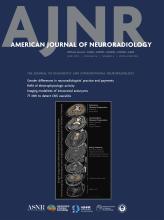Case of the Week
Section Editors: Matylda Machnowska1 and Anvita Pauranik2
1University of Toronto, Toronto, Ontario, Canada
2BC Children's Hospital, University of British Columbia, Vancouver, British Columbia, Canada
Sign up to receive an email alert when a new Case of the Week is posted.
June 24, 2013
Spinal Dural Arteriovenous Fistula (SDAVF)
- High-flow AV shunt located between a radioculomeningeal artery and a radicular vein, which drains to the perimedullary vessels, leading to venous congestion of the spinal cord
- Presumably acquired lesions, becoming symptomatic in middle-aged men. SDAVF is the most frequent vascular malformation of the spinal cord
- Symptoms resulting from congestive myelopathy include hypesthesia, paresthesias, paraparesis, back pain, impotence, and sphincter disturbances. Neurological deficits are often slowly progressive. Time from symptom onset to diagnosis is often delayed.
- Key Diagnostics Features:
- MRI reflects cord edema, venous hypertension, and pial vein inflammation.
- Dilated pial veins on the surface of the cord, best on T2WI, especially along dorsal surface
- Hypointensity on T2WI involving the cord periphery may be another feature of venous hypertensive myelophathy, resulting from SDAVF caused by slow flow of blood containing deoxy-hemoglobin within a distended capillary and venous system.
- Edema spares cord periphery, with flame-shaped margins superiorly and inferiorly
- Spinal catheter arteriography remains the best option for confirming diagnosis: evaluates
- Exact level of AV shunt, localization of anterior spinal artery, access for interventional therapy
- DDx: Multiple sclerosis, neuromyelitis optica, inflammatory conditions, spinal cord tumor
- Rx: Embolization











